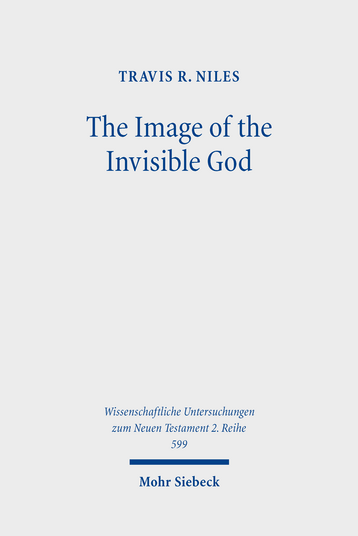Given the human propensity for making and using various kinds of images, it is little surprise that religious-philosophical authors from various ancient cultures used the concept of an »image« when speaking of the divine. What does the author of Colossians mean to convey by calling Jesus Christ the »image of the invisible God«? Through an examination of various image discourses and a detailed exegetical study of Colossians 1:15–20, T.R. Niles situates the image concept of Colossians within the image discourse of the first century A.D. and elucidates its specific contours.
ISBN 978-3-16-161473-6
Survey of contentsIntroduction
A. Homo Pictor?
B. Working Assumptions of the Study
C. Outline of the Study
Chapter 1: Image Discourses
A. The Hebrew Bible and the Dead Sea Scrolls
B. Plato of Athens
C. The Wisdom of Solomon
D. Philo of Alexandria
E. Plutarch of Chaeronea
F. Dio Chrysostom's Olympic Discourse (Oratio 12)
G. Three Stoics of the First Century A.D.
H. The Apostle Paul
I. Image Discourses: Résumé
Chapter 2: Exegetical Prolegomena for Colossians 1:15–20
A. Textual Criticism
B. Origin of the Text
C. Anatomy of the Text
Chapter 3: Exegesis of Colossians 1:15–20
A. Verses 15–16: What is the »Image of the Invisible God«?
B. Verse 17: The Supremacy of Christ
C. Verse 18a: The Head of the Body, Which is the Church
D. Verses 18b-20: Restorative Reconciliation
Chapter 4: Colossians among its Contemporaries
A. The Image Concept of Colossians
B. Situating Colossians in the Image Discourse of the First Century A.D.
C. Résumé
Concluding Reflections: »As We Catch Sight of the Sun in the Water«
A. The Problematic Nature of Images
B. Inclusion in the Image: A Positive Estimation of the Discrepancy between Model and Image
C. All Things Hold Together in Him










 Stumble It!
Stumble It!

No comments:
Post a Comment